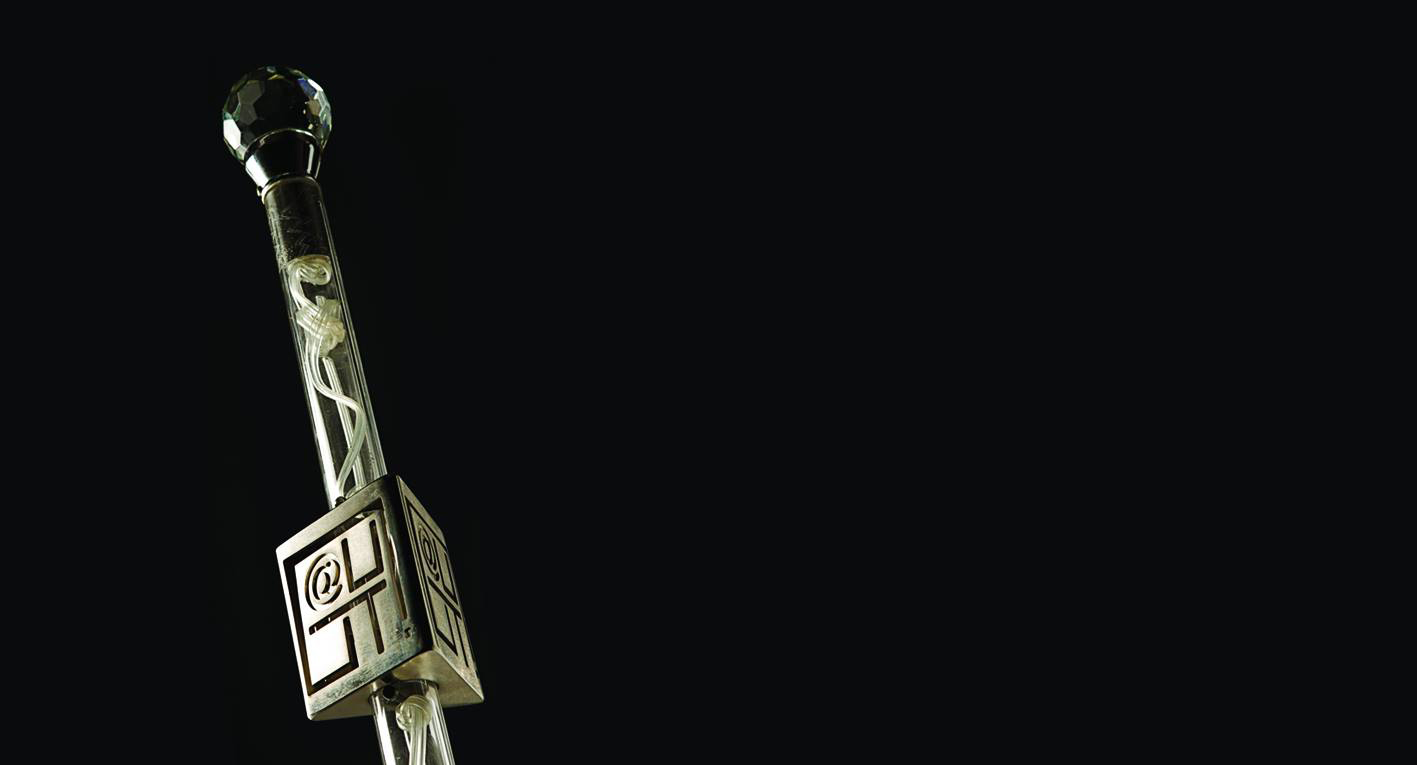il corpo umano sprigiona elettricità.....il bastone la scarica a terra
the human body releases electricity... the stick discharges it to the ground

I accepted with pleasure the invitation of Architect
Luca Bolognese to introduce this publication about
the Contemporary Canes he designed.
The cane is usually considered an object of the
past. In fact, the production stopped at ‘Decò’
period and nowadays only a few manufacturers
substantially reproduce shapes and characteristics
widely known. Today it exists a personalized
production only for the so-called popular canes
(canes in wood, generally monossyle, carved in
the handle and/or on the frame) where the
engraver or the sculptur transfers his feeling often
with stylistically new shapes.
The interest towards the cane considerably increased in the last years: there are always more collectors delighted in the matter, more exhibitions and meetings are customary, more plentiful are the publications which payed however attention to hystorical-artistic evolution of the cane in the past centuries without asking if today the interest toward this object is still alive and present. Therefore it’s natural, like is Bolognese’s work, to start watching also the present and try to modernize a “product” which otherwise could keep a “niche” of the past. The artistic survival, even if in the logical hystorical stylistical change, persists only if adapting to the contemporaneity; so an object has to get up to date not to be anchored to the past, and risking to dispel in a romantic oblivion.
Bolognese, in a strongly symbolic way sometimes looking like provocative, introduces the contemporaneity in his art, the daily and even the avant-gardism such as the use of new and unusual materials. In this way come out objects of absolut originality and personality. In his work we feel a detachment from the stereotyped model of cane we were used to; there is an absolutely new search, a personal and not banal or expected print, an effort to suggest not only an object being of aesthetic shape, but also of eccentric guidance. I can’t assert, although I hope, if the cane could be the element, friend and fellow, which thoroughly was in the Eight Hundred. This publication has for sure the undoubted meaning of stimulating the interest towards the cane world since it usually looked at the past till today, whereas it could modernize so to become cultural and artistic contemporary appearance.
Bolognese, in his intervention in the publication, with his typical liking and his wit of being Tuscan, makes the cane talk and tell “I’m alive again”. We lovers have to look at his work with this wit and be grateful for the effort done to going on with the cultural current that involves us deeply.
renzo traballesi